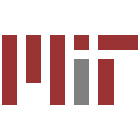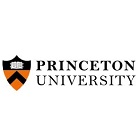- News and articles
- Events
- Find usIDP AustraliaIDP BahrainIDP BangladeshIDP CambodiaIDP CanadaIDP ChinaIDP EgyptIDP GhanaIDP Hong KongIDP IndiaIDP IndonesiaIDP IranIDP JordanIDP KenyaIDP KoreaIDP KuwaitIDP LebanonIDP MalaysiaIDP MauritiusIDP Middle EastIDP NepalIDP New ZealandIDP NigeriaIDP OmanIDP PakistanIDP PhilippinesIDP Saudi ArabiaIDP SingaporeIDP Taiwan, ChinaIDP ThailandIDP TurkeyIDP UAEIDP VietnamIDP Corporate
- Social
- English
The USA is renowned for attracting the highest number of international students globally. This popularity stems from its high-quality education system, diverse curriculum, multicultural atmosphere, and a wealth of opportunities. These factors contribute to why numerous students are drawn to pursue their studies in the USA.
Why study in USA
Academic excellence: The USA is home to some of the world's top-ranked universities and colleges, offering high-quality education across a wide range of disciplines.
Diverse cultural experience: Studying in the USA provides an opportunity to immerse yourself in a diverse and vibrant cultural environment, broadening your perspectives and enhancing your global awareness.
Innovative research opportunities: The USA is at the forefront of research and innovation, providing students with access to cutting-edge facilities and opportunities to collaborate with leading experts in their fields.
Career advancement: A degree from a US institution can significantly boost your career prospects, as employers worldwide value the skills, knowledge, and global perspective gained through an American education.
Networking and connections: Studying in the USA allows you to build a strong professional network, connecting with classmates, faculty, and industry professionals that can open doors to exciting career opportunities.
Student visa requirements for the US
When planning to study in the USA, international students typically apply for one of the following types of visas:
F-1 Visa: This is the most common type of student visa. If you wish to engage in academic studies in the USA at an accredited U.S. college or university or to study English at an English language institute, you will need this visa.
J-1 Visa: This visa is for students who need to obtain practical training that is not available in their home country to complete their academic program. The training must be directly related to the academic program. The J-1 visa is also used for scholars, teachers, and exchange visitors participating in programs that promote cultural exchange, especially to obtain medical or business training within the U.S.
M-1 Visa: If you plan to engage in non-academic or vocational study or training at a U.S. institution, you will need an M-1 visa.
The application process typically involves the following steps:
Acceptance at a SEVP-Certified School: Before you can apply for a visa, you need to be accepted by a school authorised by the Student and Exchange Visitor Program (SEVP).
Pay the SEVIS Fee: After receiving your Form I-20 (for F or M visas) or DS-2019 (for J visas), you must pay the SEVIS I-901 fee.
Complete the Visa Application: Apply for the visa using the Online Non-immigrant Visa Application, Form DS-160.
Schedule and Attend a Visa Interview: You'll need to schedule an interview at a U.S. Embassy or Consulate in your country.
Gather Required Documents: This includes your passport, Non-immigrant Visa Application confirmation page, application fee payment receipt, a photo, and your Certificate of Eligibility (I-20 or DS-2019 form).
Attend Your Visa Interview: A consular officer will determine your eligibility for the visa.
Visa Issuance and Travel to the USA: If approved, you may need to pay a visa issuance fee and will then receive instructions on how to receive your passport with the visa.
Maintain Your Status: Once in the U.S., you must maintain your student status.
Remember, visa requirements and processes can change, so it's always recommended to check the latest information from the U.S. Department of State or the U.S. Embassy or Consulate in your country.
Intakes available in the USA
In the United States, universities and colleges typically offer several intake periods throughout the academic year for new students. These intakes are:
Fall Intake: The fall intake starts in late August or early September and is the primary admission season in the U.S. This is when most students start their academic year, and it offers the widest range of courses and opportunities for scholarships. The majority of university programs, especially at the undergraduate level, begin in the fall.
Spring Intake: Starting in January, the spring intake is the next major admission period. While not all programs are available for new admissions in spring, many universities do offer a considerable number of courses for students who missed the fall intake.
Summer Intake: Starting around May, the summer intake is less common and typically offers a limited range of courses. This intake is more suitable for short-term courses, language classes, or certain specialised programs.
Winter Intake: Some universities may also have a winter intake, which begins in November or December, but this is quite rare and usually limited to a few specific programs or institutions.
When choosing an intake, it's important for students to consider factors like the availability of their desired program, scholarship opportunities, application deadlines, and their own readiness and preparation for university life. It's always recommended to check with the specific universities for the availability of courses and exact start dates for each intake period.
Cost to study in the USATop of Form
The cost of studying in the USA can vary widely depending on several factors such as the type of institution (public or private), level of study (undergraduate, graduate, or doctoral), program of study, and location. Here's a general breakdown:
Tuition Fees:
Undergraduate Programs: For public universities, tuition can range from about $10,000 to $35,000 per year. Private universities can charge significantly more, with tuition often exceeding $35,000 per year
Graduate Programs: Tuition for graduate programs varies more widely, but it generally ranges from $20,000 to $40,000 per year. Programs in business, engineering, and medicine can be more expensive
Community Colleges: These offer lower tuition rates, typically between $6,000 and $20,000 per year
Living Expenses:
The cost of living can vary greatly depending on the location. Urban areas, especially in states like New York, California, and Massachusetts, tend to be more expensive.
On average, students might spend anywhere from $10,000 to $18,000 per year on living expenses, including accommodation, food, transportation, and personal expenses.
Additional Costs:
Health insurance is mandatory for international students, and it can cost anywhere from $500 to $1,000 per year
Books and supplies can add up to $1,000 to $2,000 per year
Total Estimated Cost:
For undergraduate students, the total cost (including tuition and living expenses) can range from $20,000 to $50,000 per year or more
For graduate students, the total cost can range from $30,000 to $60,000 per year or more, depending on the program and institution
*All costs are indicative
Scholarships to study in the USA
When exploring scholarships to study in the USA, it's important to consider a variety of options available to international students. These scholarships can be broadly categorised and sourced from different entities:
University-Specific Scholarships: Many U.S. universities offer scholarships to international students. These can be merit-based, need-based, or for specific fields of study. Examples include full-tuition scholarships, partial scholarships, or grants covering living expenses. Students should check with individual universities for available scholarships and eligibility criteria.
Government-Funded Scholarships: The U.S. government, as well as governments of other countries, offer scholarships for international students. Examples include the Fulbright Foreign Student Program, which offers grants for graduate students, young professionals, and artists from abroad to study and conduct research in the USA.
Private and Non-Governmental Scholarships: Various private organisations, foundations, and NGOs offer scholarships for international students. These might be based on academic achievements, leadership qualities, or specific areas of study. Examples include the Rotary International Scholarships and the Soros Fellowship for New Americans.
Community Organisations and Religious Groups: Some community organisations and religious groups offer scholarships or financial assistance to international students. Students often need to be affiliated with or recommended by the organisation.
Corporate Sponsorships: Some corporations provide scholarships or sponsorships to students, often in specific fields related to their industry.
Research and Teaching Assistantships: Many graduate programs in the USA offer assistantships which provide a stipend and sometimes tuition waivers in exchange for research or teaching services.
Sport and Cultural Scholarships: These are offered to students excelling in sports or cultural activities. Universities often scout for talent that can contribute to their sports teams or cultural diversity.
When searching for scholarships, it's essential to start early, meet all application deadlines, and carefully review the eligibility and application requirements. Additionally, students should be prepared to provide academic transcripts, letters of recommendation, and often a personal statement or essay as part of the application process. Remember, each scholarship has its own criteria and application process, so thorough research and tailored applications are key.
*Contact ID experts for scholarship information
Top courses to study in the USA
The USA offers a wide array of courses across various fields, attracting students globally due to their quality education, cutting-edge research, and excellent career prospects. Here are some of the top courses to study in the USA:
Business and Management: Especially MBA programs, along with finance, marketing, entrepreneurship, and international business. U.S. business schools are celebrated for their innovative teaching methods and strong industry ties.
Engineering: Particularly in fields like computer science, mechanical, electrical, civil, and chemical engineering. The U.S. is known for its technological advancements and offers excellent facilities and research opportunities.
Computer Science and Information Technology: With the U.S. being a global leader in technology, courses in software development, artificial intelligence, cybersecurity, and data science are highly valued.
Medicine and Health Sciences: Including degrees in medicine, nursing, public health, biomedical sciences, and pharmacy. The U.S. healthcare education system is renowned for its rigorous training and advanced research facilities.
Law: U.S. law schools offer comprehensive legal education with various specialisations such as corporate law, international law, intellectual property law, and human rights law.
Social Sciences and Humanities: Programs in psychology, sociology, political science, history, and English literature are popular, offering diverse perspectives and critical thinking skills.
Physical and Life Sciences: Courses in biology, chemistry, physics, and environmental science are sought after for their research-based curriculum and state-of-the-art laboratories.
Mathematics and Statistics: Essential for careers in finance, research, and technology, these programs offer strong foundational knowledge and analytical skills.
Fine and Applied Arts: Including courses in graphic design, fine arts, performing arts, and music, known for fostering creativity and innovation.
Economics: Offering insight into financial systems and economic theories, these programs are popular for those interested in careers in finance, policy, or academia.
Each field offers various specialisations and can lead to diverse career paths. Students should consider their interests, career objectives, and the strengths of individual universities in the U.S. when choosing a course of study.
Top universities to study in the USA
The United States is home to many prestigious universities known for their academic excellence and diverse course offerings. Here are some of the top universities to consider for your studies in the USA:
Harvard University
Massachusetts Institute of Technology (MIT)
Stanford University
California Institute of Technology (Caltech)
Princeton University
University of Chicago
Columbia University
Yale University
University of Pennsylvania
University of California, Berkeley
University of California, Los Angeles (UCLA)
University of California, San Francisco (UCSF)
University of Michigan, Ann Arbor
Northwestern University
Duke University
Job prospects in the USA
Job prospects in the USA for international students and graduates can vary significantly depending on the field of study, level of education, work experience, and the current economic climate. Here are some key points to consider:
STEM Fields (Science, Technology, Engineering, and Mathematics): Graduates in STEM fields generally have strong job prospects due to the high demand for skilled professionals in these areas. The technology sector, in particular, offers numerous opportunities, especially in areas like software development, data science, and engineering.
Business and Finance: The U.S. has a robust business sector, and there is a steady demand for professionals in finance, marketing, accounting, and management. MBA graduates often have good job prospects, especially if they graduate from highly regarded business schools.
Healthcare: There is a consistent demand for healthcare professionals, including doctors, nurses, pharmacists, and healthcare administrators, partly due to an ageing population and the complexity of the healthcare system in the U.S.
Education and Research: There are opportunities in academia and research, especially for those with advanced degrees. However, these positions can be competitive and may require a strong track record of research and publications.
Arts and Media: Job prospects in arts, media, and entertainment can be more competitive and often rely on individual talent, networking, and portfolio quality.
Engineering and Manufacturing: For those with degrees in various engineering disciplines, there are opportunities in manufacturing, infrastructure development, renewable energy, and automotive industries, among others.
Legal Field: For those with a degree in law, prospects can be good, especially if they have passed the U.S. bar exam. However, this field is also competitive and often requires a high degree of specialisation.
Hospitality and Tourism: Opportunities in this sector can vary based on economic factors but can include roles in hotel management, travel coordination, and event planning.
Optional Practical Training (OPT): International students in the U.S. on F-1 visas are eligible to apply for OPT, which allows them to work in their field of study for up to 12 months after graduation, and up to 36 months for STEM graduates.
Work Visa Considerations: Securing long-term employment in the U.S. often depends on obtaining a work visa (like the H-1B visa). The process can be competitive and is subject to various regulations and annual caps.
It's important to note that the job market is dynamic, and prospects can change based on economic conditions, technological advancements, and shifts in industry demands. Networking, internships, and gaining practical experience are crucial for improving employment chances in the U.S. Additionally, international students should stay informed about the regulations governing work visas and employment for non-U.S. citizens.
Cost of living in the USA for international students
The for international students can vary significantly depending on the location, lifestyle, and personal spending habits. However, to give a general idea, here are some common expenses and their approximate costs:
Housing:
On-Campus Accommodation: Typically ranges from $5,000 to $8,000 per academic year.
Off-Campus Housing: Can vary widely; in major cities, rent can range from $1,000 to $2,000 per month, while in smaller towns or suburban areas, it might be $700 to $1,200 per month.
Food and Groceries: Approximately $200 to $400 per month. This can vary based on dietary habits and whether the student is cooking or buying meals.
Utilities: If not included in the rent, utilities such as electricity, water, gas, and internet can cost around $100 to $200 per month.
Transportation: Public transportation passes can range from $30 to $100 per month, depending on the city. Owning and maintaining a car would be significantly more expensive.
Books and Supplies: Around $500 to $1,000 per academic year. This can be higher for certain specialised courses.
Health Insurance: Mandatory for international students, and can range from $500 to $1,000 per year, depending on the coverage.
Personal Expenses: Including clothing, entertainment, and other miscellaneous items, can range from $100 to $300 per month.
Phone Bills: Mobile phone plans can cost between $30 and $60 per month.
It's important to note that these are general estimates, and actual expenses can vary. For instance, living in major cities like New York City, San Francisco, or Boston is typically more expensive compared to smaller towns or cities in the Midwest.
International students are advised to create a budget to manage their finances effectively and consider potential savings, such as student discounts, shared accommodations, and cooking at home. Additionally, many universities provide estimated cost of living figures specific to their location and facilities, which can be a useful resource for planning.
FAQs related to US Education
Ques 1: What are the requirements to study in the USA?
Ans: You need a valid passport, a student visa (F-1, M-1, or J-1), proof of acceptance into a SEVP-certified institution, evidence of financial support, and English proficiency (usually demonstrated through IELTS scores).
Ques 2: How do I apply to U.S. universities?
Ans: The application process typically includes submitting an application form, academic transcripts, standardised test scores (like SAT/ACT for undergraduates, GRE/GMAT for graduates), English language proficiency test scores, letters of recommendation, and a personal statement or essay.
Ques 3: What is the difference between a college and a university in the U.S.?
Ans: Colleges are generally smaller institutions offering undergraduate degrees, while universities offer both undergraduate and graduate degrees and have a larger selection of programs.
Ques 4: Can I work while studying in the USA?
Ans: International students on F-1 visas are allowed to work on-campus for up to 20 hours per week during the academic term and full-time during vacations. Off-campus employment is restricted and usually requires authorisation.
Ques 5: What is the OPT program?
Ans: Optional Practical Training (OPT) allows international students on F-1 visas to work in the U.S. in their field of study for up to 12 months after graduation, or up to 36 months for STEM students.
Ques 6: How much does it cost to study in the USA?
Ans: Tuition fees range from $20,000 to $50,000 per year, with living expenses ranging from $10,000 to $20,000 per year, varying greatly depending on the institution and program.
Ques 7: Are scholarships available for international students?
Ans: Many U.S. universities offer scholarships to international students based on merit, need, or specific talents. There are also external scholarships offered by various organisations.
Ques 8: What is the duration of undergraduate and graduate programs in the U.S.?
Ans: Undergraduate programs typically take 4 years, while graduate programs usually take 1 to 2 years. Doctoral programs vary widely, often taking 4-6 years.
Ques 9: What is the credit system in U.S. universities?
Ans: U.S. universities use a credit system to measure coursework, where each course is assigned a certain number of credits, and students must accumulate a specific number to graduate.
Ques 10: Can I stay in the U.S. after my education is complete?
Ans: Staying in the U.S. post-education depends on your visa status and employment opportunities. You may work temporarily under OPT, and some students transition to work visas like the H-1B.




Explore in USA
Hover over the city cards to discover more!


Send funds securely with money transfer
Explore safe, convenient and fast payment solutions with our market leading partners.

Find your home away from home
We’ll help you discover student accommodation that makes you feel comfortable and at home, no matter where you are.
Cost of living calculator
Estimate how much you will need to cover your expenses including cost of living comparison for various country and accommodation options.
Can’t decide where to study?
Answer 5 quick questions to get personalised content and course recommendations






















